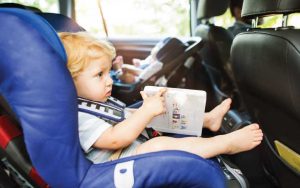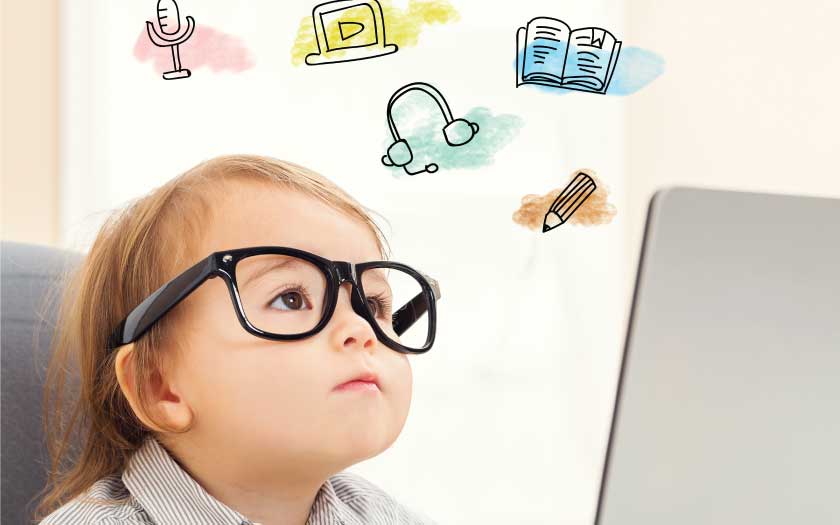It’s not a very common opinion that teaching a baby to read is possible, but the fact remains that it’s highly likely to happen by default, provided the little one is surrounded by a literacy-rich environment.
Mind the window of opportunity
Babies, as highly dependent as they are, seem to have an advantage over the rest of us with their rapidly developing brain. It allows them to effortlessly learn and absorb mass amounts of information, and this goes on right up to the age of five.
This period of intense brain development has been dubbed a number of names, such as “Critical Period” and the “Window of Opportunity”. Whatever you may call it, it’s considered the ideal time to introduce practically anything you want a baby to learn. Skills, such as learning to read, are acquired with the least amount of effort during these periods.
So yes, you can, if you want to, teach your baby to read!
The human brain grows and strengthens through use. By stimulating your baby’s brain, you are assisting in its development and its connections (called synapses). These are all very important elements of your child’s intellectual growth and it corresponds greatly to babies learning to read. – If babies can pick up their mother tongue easily from birth, it means they can also pick up the love of written words, provided that they are given adequate exposure and surroundings.
The road to reading starts from infancy
Babies acquire a love of words, an excitement about storytelling, and the wonder of sharing their thoughts with loved ones using words. Parents play an integral role in nurturing the interest in reading through activities that build these skills and interests.
The power of a baby’s surroundings
Consider for a moment a five-year-old, who seems to be a chatterbox and simply cannot stop talking! There is a very likely chance that this child was brought up in a household where family members (or a person close to the child) are talkative individuals. From an environment such as this, repetition is inevitable, and so is the learning of new words, pronunciations, the meaning of words, etc. While situations such as this very likely came about by default owing to the surroundings the child was exposed to, imagine how much more that child will learn if deliberate steps were taken to impart other languages into the scene.
That same theory can be played with when it comes to teaching a baby to read. A fun literacy-rich environment, a relaxed and laid-back attitude, and a non-competitive mindset can spell incredible learning opportunities for a baby and may just do the trick!
It doesn’t matter if you believe it or not, but surely there can’t be any harm in giving it a go. So, here are some pointers which we hope will help out interested parents!
’Label’ everything
As you go along your day caring and doting on your baby, make a point of saying the little one’s name clearly. Also, call out baby’s body parts, items of clothing, and everything else that both of you come to contact with daily. Baby might take some time to make the connections, but rest assured that you’re taking crucial steps to build the basics of language and literacy.
From an environment such as this, repetition is inevitable, and so is the learning of new words, pronunciations, the meaning of words, etc.
Learn rhymes and songs
Children experiment with the sounds of language with rhyme, which builds their interest in words and sounds. Rhymes with gestures help to link actions with the action words. Poetry for children also builds this awareness and love of language.
Turning pages
Infant and babies who are regularly read to will sooner or later try to turn the pages of the book themselves, as they’ve seen it being done by mom or dad over and over again. This alone shows that they have been paying attention during those reading sessions! You can be sure that your baby is looking at all those pictures, so don’t forget to deliberately point to them, name each image. You will find that in time, your baby will attempt to imitate you and begin ‘naming’ those pictures too.
Tell beddy-bye stories
Make storybook time a part of the bedtime ritual from infancy. This will help connect books with feel-good moments and help instill the love of reading in the future too.
Become a daily narrator
Narrate whatever you’re doing in your baby’s presence and this includes whatever you’re reading too. By making ‘connections’ between words and events, you’re helping your baby learn the elements of a story.
Nurture those thoughts
Had a great day with the baby at the park? Did baby enjoy the car ride today? Did the baby seem happy to play with a new friend today? Pay a visit to your local bookstore and pick out as many topics you think would make interesting and likely ‘reflections’ during reading times with your baby. Sit down with a new book together and ‘discuss’ the connections.
Standby an interesting, attractive book for every occasion. Book stores these days are packed with all sorts of books made specially for babies and young children!
Be consistent
Consistency is the key to learning (or teaching) anything. Just be diligent in the above methods and you’ll surely see the result in your baby’s literacy development.
Use colorful picture books!
When your baby can sit up comfortably, which will be around six months of age, you can begin to introduce books. Make that picture books with attractive, colorful images that will help capture the little one’s attention! It is important to remember though, your little one, won’t necessarily take to the idea right away, so you might have to be patient and give baby some time.
Also, keep in mind that babies generally have a very short attention span, so watch for signs that the baby has had enough and close the book. The main thing to keep in mind is, each interaction with the open picture book, no matter how brief it may be, helps to foster the love of books, and consequently, reading.

The habit of filling in life’s spaces with books and always having them handy helps a child see them as a regular part of life. To help achieve this, pack a book or two in your little one’s diaper bag and keep a couple of books in the car. Change or rotate those books regularly to keep it interesting and fresh.


